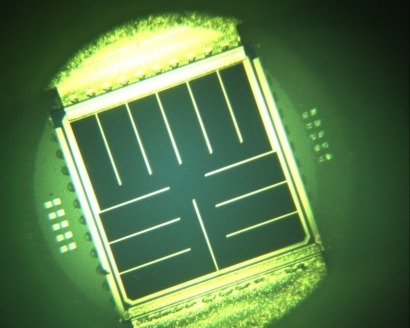
Hongrui Jiang, a Professor of electrical and computer engineering at the University of Wisconsin – Madison, has proposed a design for a new type of solar panel that can simultaneously generate power from the sun and store reserves for later use.
Professor Jiang and his students developed the idea as an offshoot of a National Institutes of Health grant funded project to design a self-focusing contact lens that can adapt to the eyes of adults suffering from presbyopia, a natural ageing process that stiffens the optical lens and reduces the eye’s ability to focus. The result was a design that balances energy harvesting storage and usage.
“We needed a multi-functional and small-form-factor device in order to integrate it all into a single contact lens structure” Professor Jiang said.
In the new solar panel design the top layer of each PV cell is a conventional photo electrode which converts sunlight into electrons. During this process the electrons split off into two directions, most of them flowing out of the device to provide a power load while some are redirected to a polyvinylidene fluoride polymer (PVDF) coated on zinc oxide nanowires. The PVDF has a high dielectric constant required to serve as an energy storage solution.
“When there's no sunlight, the stored power will come back through the nano wires to power the load.” Jiang explained.
The design enables a standard-sized solar cell which can simultaneously power a device and store energy, creating a closed-loop system for small-scale applications. At present the proof of concept only converts 4 percent of the sunshine striking the photoreceptor into electricity, some 20 percent less efficient than most commercial solar panels. However, Jiang and his team expect the conversion efficiency and the amount of energy stored to improve as they further refine the design.
The design scales up easily and so small-scale power grids used in energy-efficient buildings to balance renewable power sources would be an ideal application as self-contained solar panels would limit the need for battery management allowing engineers to design buildings with a reduced reliance on the external power grid.
The full project report for the new solar panel design has now been published in the journal Advanced Materials.
Further information:

